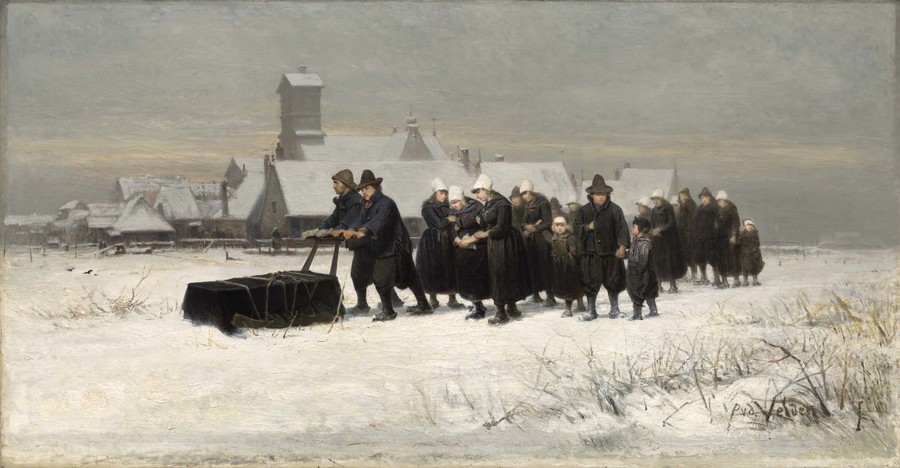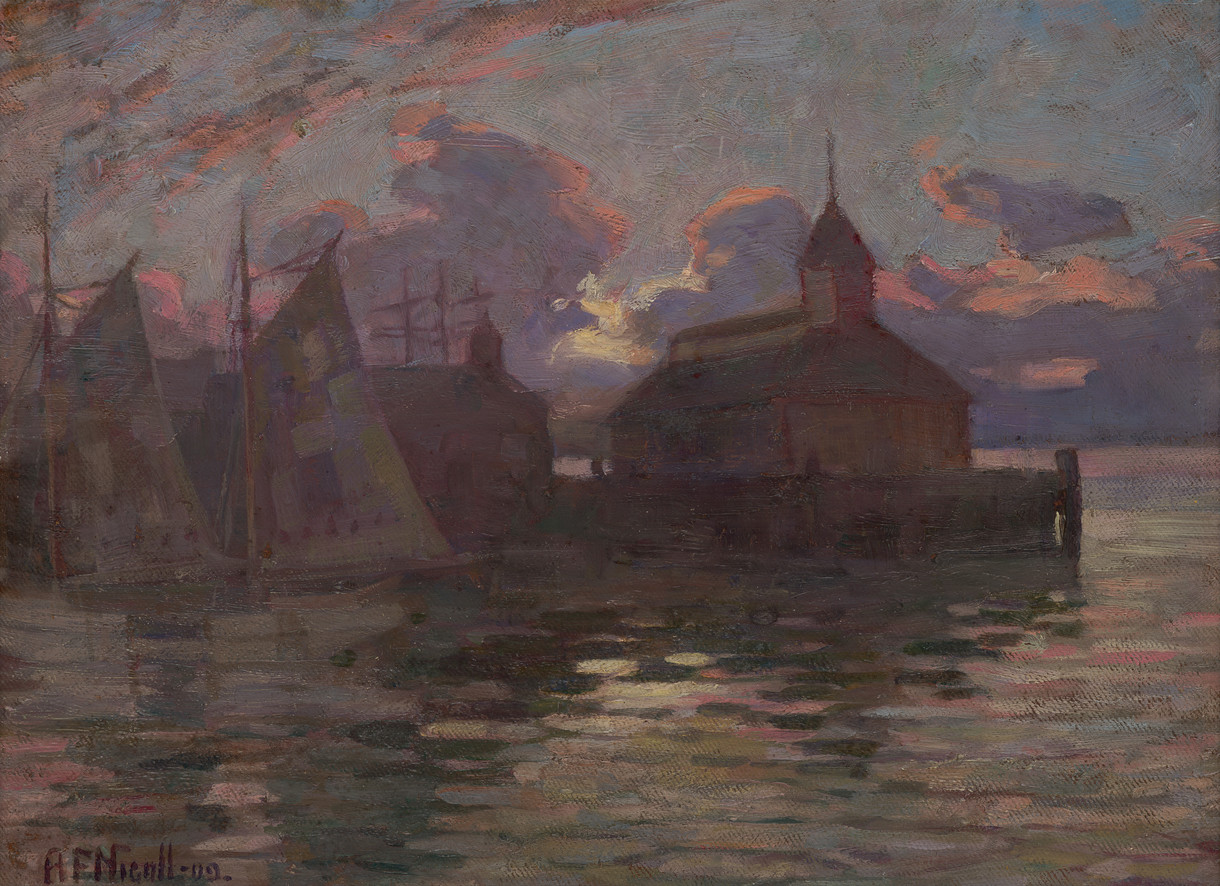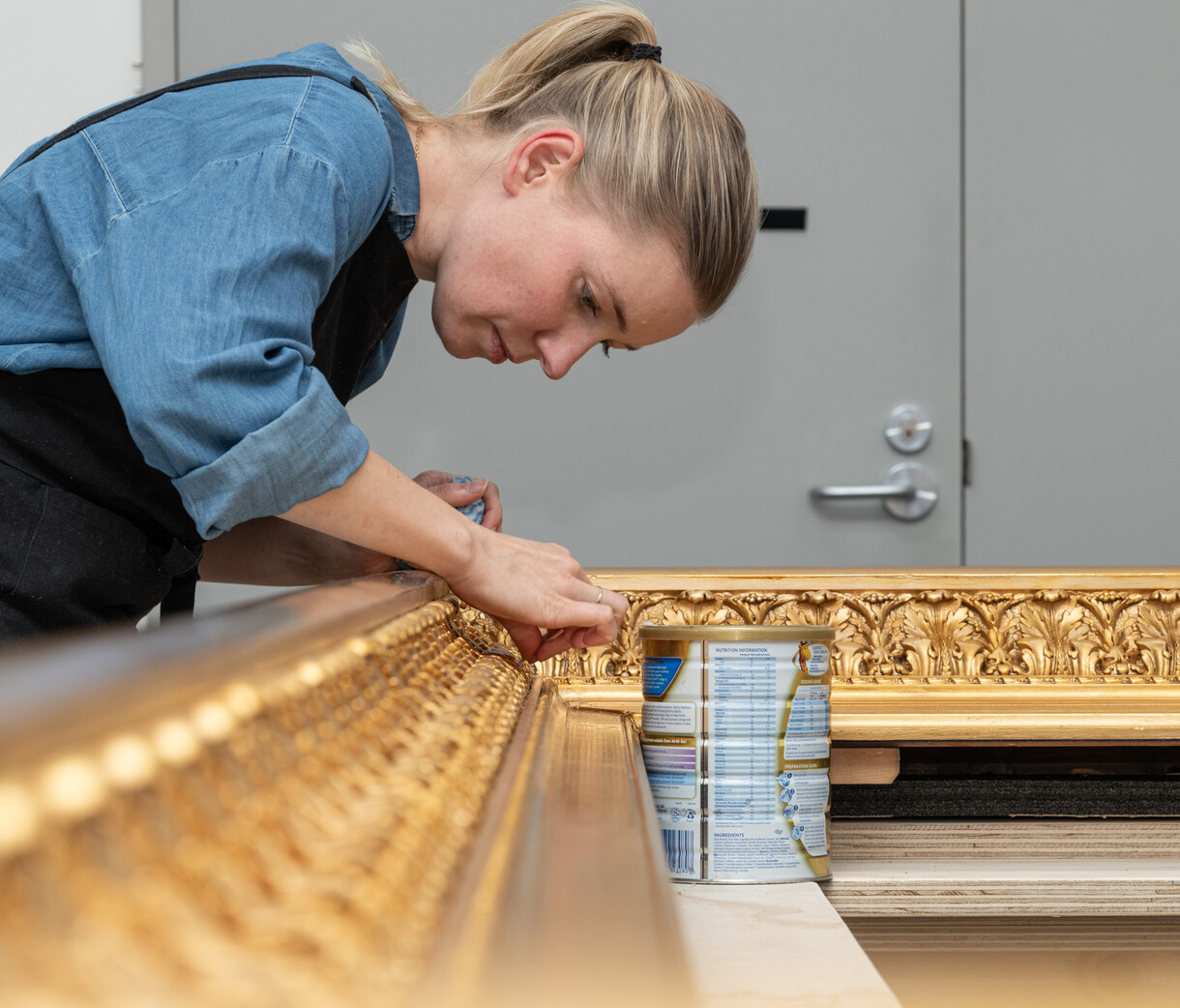The Dutch Funeral, Retitled

When you think about it, The Dutch Funeral is a peculiar title for a work painted in the Netherlands, by a Dutch artist. You could imagine such a work being titled The Funeral, or A Funeral; or even more likely, A Funeral at a Specified Place or possibly At a Specified Time. Even Of a Certain Person. But The Dutch Funeral? Most unlikely. It was while we were researching works for the Closer exhibition that its strangeness suddenly became evident to me. I was surprised that I’d never questioned the title before. But then, like many people who grew up in Christchurch, I was used to The Dutch Funeral as a fixture of local culture, a work so large it could never be taken off the wall at the McDougall; a magnificently gloomy painting which van der Velden scholar Rodney Wilson once described as “a sort of Christchurch version of the Night Watch with an immense public following”.
When I have a pressing research query, my first port of call is always the Gallery’s librarian and archivist Tim Jones. I popped in and explained the problem of the title to him.
“Was it exhibited in Europe before it came to New Zealand?” he asked.
It had indeed been shown in Europe before it was brought here – a decade before van der Velden himself disembarked – by his long-term patron, Gerrit van Asch, who arrived in New Zealand in 1879. We knew from Wilson’s research that the painting had been exhibited in the Hague in 1872 and Brussels in 1875.
“There’ll be a catalogue held somewhere. Leave it with me,” said Tim.
The next morning, Tim had a copy of Onze Schilders in Pulchri Studio (1881) on his screen, digitised by Utrecht University. The title of the work van der Velden exhibited in the Hague in 1872 was recorded as Begrafenis in den winter op het eiland Marken, which translates as Burial in the Winter on the Island of Marken. (Tim, among his many other skills, is fluent in French and German, and has a reading knowledge of Dutch.) A couple of days later, we had a copy of the Exposition Générale des Beaux Arts: catalogue explicatif, an exhibition catalogue published in Brussels in 1875, which gives the same title, this time translated into French. We were confident that this was the work we were looking for. And when we thought about the subject of the painting again, we realised that it was indeed a burial procession that van der Velden had pictured, with a body being taken for committal after a funeral service in the nearby church.
Meanwhile, I’d been looking at Papers Past, the website devoted to the digitisation of New Zealand’s historical newspapers and magazines – a resource which has changed the practice of history in New Zealand, removing days if not weeks of blinking at microfiche readers or sifting through ancient newspapers in library reading rooms, in search of one’s subject. The painting was first remarked upon by a Press reporter in 1890, on visiting Beach Glen, van Asch’s house in Sumner. He commented that it was “large and very striking”. It was probably the largest European painting in the Canterbury district at the time. We know that van der Velden borrowed it back from van Asch and exhibited it with his other Dutch works in Christchurch in 1891: among a list of paintings recorded in a Press advertisement, it probably appears as A Fisherman’s Funeral, Isle of Marken, Holland. But the Dutch Funeral was how it became known locally, and how it was titled in van der Velden’s newspaper obituary in 1913; by the time it was presented to the newly opened Robert McDougall Art Gallery in 1932 by Gerrit van Asch’s grandson Henry, the descriptive title had stuck.
It’s not the first time we’ve had a situation where the subject of the work has become – in the absence of other documentation or inscription – its eventual title. Frances Hodgkins’s Unshatterable (1916), for example, was acquired in 1980 as Belgian Refugees and known by that title until comparatively recently, when my curatorial colleague Ken Hall restored the artist’s original title. Over time, works of art held in private collections frequently become detached from their original context – separated from information about their title or date or subject held only in the memory of their original owner, or logged in the artist’s day-book. You’d be amazed at how many Portraits of a Lady, and Heads of a Girl, and even Landscapes, we – and other public galleries – hold in our collections.
We have quite a process for changing the title of works in the collection. It’s a major step, requiring the building of a case and the agreement of our colleagues. The curator, assisted by Tim, fills out a form documenting the evidence for the proposed change, and then it goes to the acquisitions committee, comprising all the curators, the director, the senior registrar and the deputy director. There’s a discussion – occasionally quite a robust one – and everyone needs to agree on the change.
In the case of the painting-formerly-known-as-The-Dutch-Funeral this process was even more critical. I’ll admit to a couple of reflective moments in which I considered the potential public reaction to changing the name of one of the city’s most-loved works – especially given the furore which broke out when we exhibited it without its heavy gold frame, in Peter Vangioni’s superb McCahon / Van der Velden exhibition in 2015. But the principle we followed here – in the absence of an artist to consult – was to restore the title to the earliest known version recorded during van der Velden’s lifetime. I expect that the painting will be known colloquially as The Dutch Funeral for several generations to come, but when we exhibit it from now on, we’ll call it by a translation of the name van der Velden originally gave it.









![Burial in the Winter on the Island of Marken [The Dutch Funeral]](/media/cache/9a/96/9a96b5688dc57ff080da3f88edc59314.jpg)
